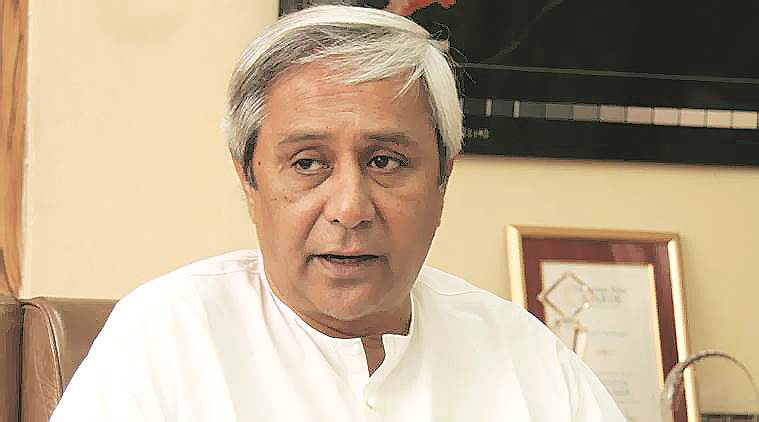SOURCE: https://indianexpress.com/article/explained/odisha-plans-legislative-council-how-states-create-a-second-house-and-why-5342010/
Odisha plans Legislative Council: how states create a second House, and why
While the government has not made public the details of the panel’s report the Legislative Council is expected to have 49 members, 1/3rd of the 147 in the Assembly.
Written by Sampad Patnaik | Bhubaneswar | Updated: September 6, 2018 5:15:28 am
During the ongoing monsoon session of the Odisha Assembly, the government is expected to introduce a Bill for the creation of a Vidhan Parishad or Legislative Council, a second House of legislature. This follows a report submitted last month by a panel of MLAs of various parties, which examined the proposal. How do Legislative Councils function, and why are they important?
Why a second House
India has a bicameral system of legislature. Just as Parliament has two Houses, the states can, if they choose, have a Legislative Council in addition to the Legislative Assembly. The Constitution provides for this option under Article 171. As in Rajya Sabha, members of a Legislative Council are not directly elected by voters.
Opinion in the Constituent Assembly was divided on the idea. Among the arguments in its favour, a second House can help check hasty actions by the directly elected House, and also enable non-elected individuals to contribute to the legislative process. The arguments against the idea: a Legislative Council can be used to delay legislation, and to park leaders who have not been able to win an election.
States with LCs
Under Article 169, a Legislative Council can be formed “if the Legislative Assembly of the State passes a resolution to that effect by a majority of the total membership of the Assembly and by a majority of not less than two-thirds of the members of the Assembly present and voting”. Parliament can then pass a law to this effect.
Currently, seven states have Legislative Councils (see box). Apart from these, Tamil Nadu’s then DMK government had passed a law to set up a Council but the subsequent AIADMK government withdrew it after coming to power in 2010. Andhra Pradesh’s Legislative Council, set up in 1958, was abolished in 1985, then reconstituted in 2007. Proposals to create Councils in Rajasthan and Assam are pending in Parliament; the PRS Legislative Research website lists the status of both these Bill as pending.
Members
 Under Article 171 of the Constitution, the Legislative Council of a state shall not have more than one-third of the total number of MLAs of the state, and not less than 40 members. But in Jammu & Kashmir, as per Section 50 of the state’s Constitution, the Assembly has 87 members and the Legislative Council 36. As with Rajya Sabha MPs, the tenure of a Member of the Legislative Council (MLC) is six years, with one-third of the members retiring every two years.
Under Article 171 of the Constitution, the Legislative Council of a state shall not have more than one-third of the total number of MLAs of the state, and not less than 40 members. But in Jammu & Kashmir, as per Section 50 of the state’s Constitution, the Assembly has 87 members and the Legislative Council 36. As with Rajya Sabha MPs, the tenure of a Member of the Legislative Council (MLC) is six years, with one-third of the members retiring every two years.
One-third of the MLCs are elected by the state’s MLAs, another 1/3rd by a special electorate comprising sitting members of local governments such as municipalities and district boards, 1/12th by an electorate of teachers and another 1/12th by registered graduates. The remaining members are appointed by the Governor for distinguished services in various fields.
LC vis-à-vis Rajya Sabha
The legislative power of the Councils are limited. Unlike Rajya Sabha which has substantial powers to shape non-financial legislation, Legislative Councils lack a constitutional mandate to do so; Assemblies can override suggestions/amendments made to a legislation by the Council. Again, unlike Rajya Sabha MPs, MLCs cannot vote in elections for the President and Vice President. The Vice President is the Rajya Sabha Chairperson; an MLC is the Council Chairperson.
Odisha House
While the government has not made public the details of the panel’s report the Legislative Council is expected to have 49 members, 1/3rd of the 147 in the Assembly. An MLC’s salary is expected to be the same as an MLA’s. The Law Department is trying to work out a system to allow for elections every two years. “We have to devise a fair system in which a third of the members retire after two and four years respectively. A lottery system will ensure which members serve two, four and six years during the first six years,” said an official overseeing the process.
The BJD, with 118 of 147 MLAs, is expected to easily pass the Bill for a Council, but the state will need the backing of the BJP at the Centre when Parliament votes on the proposal. The state BJP has opposed the timing of the move, while the Congress has objected to the idea itself. “After 18 years in power the BJD has chosen to act on a Vidhan Parishad now, just to create a parking slot for sitting MLAs who will not be given tickets in 2019,” said Odisha BJP vice president Sameer Mohanty. “The Congress will oppose the Bill when it is presented in the Assembly,” said Congress veteran Narasingha Mishra, Leader of the Opposition in the Assembly.
 SHARE
SHARE


